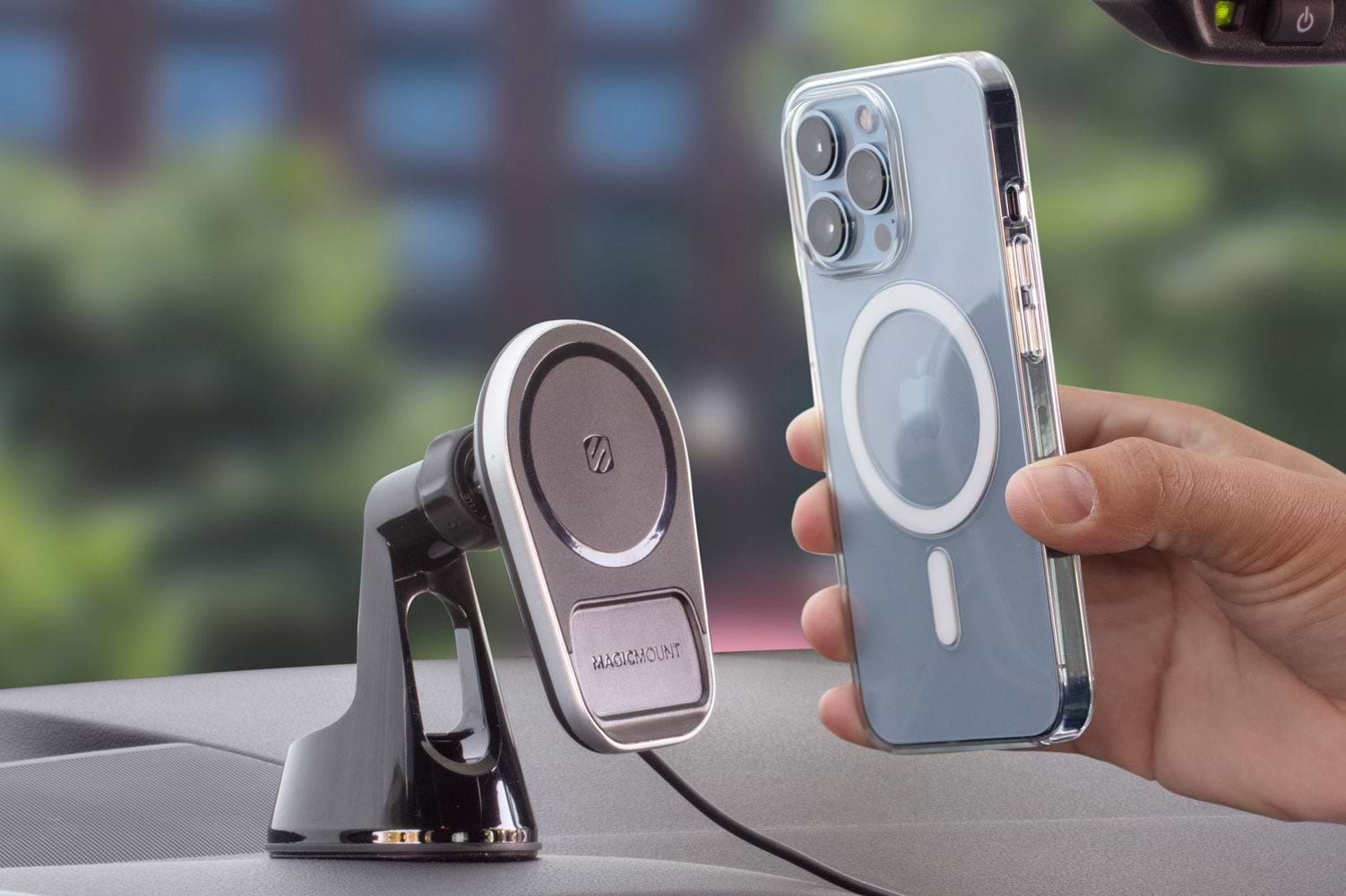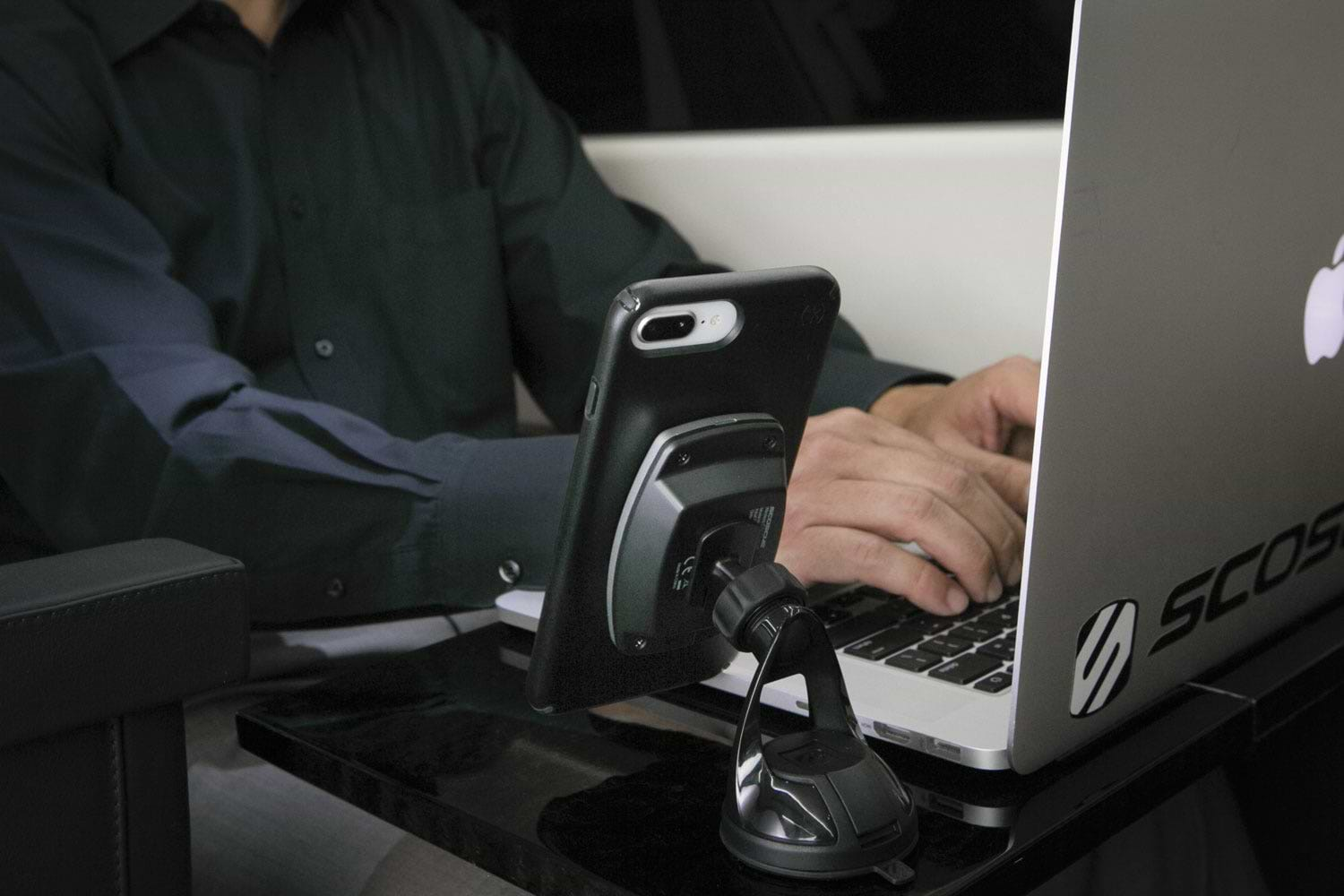Assessing Wireless Charging Speeds: Factors & Considerations

Wireless charging has become increasingly popular as a convenient way to power up our devices. However, not all wireless charging experiences are created equal. The speeds at which devices charge wirelessly can vary greatly, depending on several factors and considerations.
Understanding these factors and making informed decisions can help you assess and optimize wireless charging speeds to ensure a seamless charging experience.
Understanding Wireless Charging Technology
Before diving into the factors affecting wireless charging speeds, let's first grasp the basics of wireless charging. Wireless charging, also known as inductive charging, eliminates the need for traditional wired chargers by using electromagnetic fields to transfer energy between a charging dock or mat and a compatible device. This technology relies on two major components: the charger, which generates the electromagnetic field, and the receiver in the device, which receives the energy and converts it into electrical power to charge the battery.
Wireless charging operates using two primary standards: Qi (pronounced "chee") and Powermat. Qi is by far the most prevalent and widely supported standard, found in a multitude of devices spanning smartphones, smartwatches, and even some laptops. Powermat, although less common, may still be present in a few devices. Understanding which standard your device supports is crucial when assessing wireless charging speeds.
When wireless charging technology first emerged, it was met with skepticism due to its slower charging speeds compared to traditional wired charging. However, over the years, the charging speeds of wireless technology have evolved, transforming from slow, trickle-charging methods to much faster solutions.
Advancements in technology have pushed the boundaries of wireless charging speeds. Manufacturers have introduced high-power wireless chargers, capable of delivering up to 15W of power, rivaling the speeds of wired solutions. This breakthrough has revolutionized the way we charge our devices, offering convenience and flexibility without compromising on charging speed.
With the introduction of fast wireless charging, users can now enjoy the benefits of wireless charging without the long wait times. Whether you're at home, in the office, or on the go, wireless charging pads and docks provide a hassle-free way to keep your devices powered up throughout the day.
Furthermore, wireless charging technology is not limited to smartphones and smartwatches. It has expanded to other devices such as tablets, headphones, and even electric vehicles. This widespread adoption of wireless charging across various industries showcases the versatility and potential of this technology.
As wireless charging continues to evolve, researchers and engineers are working on improving efficiency and expanding compatibility. The future of wireless charging holds the promise of even faster charging speeds, longer-range charging capabilities, and seamless integration into our daily lives.
Key Factors Affecting Wireless Charging Speeds
When it comes to wireless charging speeds, several factors come into play. Understanding these factors can help you identify potential bottlenecks and optimize your charging experience.
Wireless charging technology has revolutionized the way we power our devices. Gone are the days of tangled cords and limited mobility. With wireless charging, you can simply place your device on a charging pad and watch as it magically powers up. However, not all wireless charging experiences are created equal. The speed at which your device charges wirelessly can vary depending on a few key factors.
Power Output of the Charger
One essential factor affecting wireless charging speeds is the power output of the charger. Wireless chargers come in various power ratings, ranging from 5W to 15W or even higher. The higher the power output of the charger, the faster your device will charge. It is vital to ensure that your charger supports your device's power requirements to achieve optimal charging speeds.
Imagine having a charger with a low power output trying to charge a power-hungry device. The charging process would be slow and frustrating. On the other hand, a charger with a high power output would deliver a quick and efficient charging experience. So, when shopping for a wireless charger, make sure to check its power rating and compatibility with your device.
Distance Between Charger and Device
The distance between the wireless charger and your device also influences charging speeds. The closer the device is to the charger, the more efficient the energy transfer. Ideally, the device should be placed directly on the charging pad or within the specified charging range. Intervening objects or excessive distance can cause energy loss, resulting in slower charging speeds.
Think of wireless charging as a conversation between the charger and your device. The closer they are, the better they can communicate and exchange energy. Placing your device far away from the charger would be like trying to have a conversation across a crowded room. The message gets lost, and the interaction becomes sluggish. To ensure optimal charging speeds, it is recommended to keep your device as close to the charger as possible.
Material Interference in Wireless Charging
The materials used in charging pads and cases can affect wireless charging speeds. Certain materials, such as metal, can interfere with the electromagnetic field, reducing charging efficiency. It is crucial to ensure that both the charging pad and device case are compatible with wireless charging to avoid any speed limitations.
Imagine trying to charge your device on a metal surface. The metal would disrupt the electromagnetic field, hindering the charging process. To overcome this, charging pads are designed with materials that allow for efficient energy transfer. Similarly, device cases should be made from materials that do not interfere with wireless charging. By ensuring compatibility between the charging pad, device case, and your device, you can maximize charging speeds and eliminate any potential obstacles.
Wireless charging is undoubtedly a convenient and futuristic way to power your devices. By considering factors such as the power output of the charger, the distance between the charger and your device, and material interference, you can optimize your wireless charging experience. So, the next time you place your device on a wireless charging pad, take a moment to appreciate the technology behind it and how these key factors contribute to the speed at which your device charges.
Considerations When Assessing Wireless Charging Speeds
When assessing wireless charging speeds, several considerations go beyond the technical aspects of the charger itself. Taking these factors into account can help you make informed decisions and optimize your wireless charging experience.
Wireless charging technology has revolutionized the way we power our devices. Gone are the days of tangled cords and limited mobility. With wireless charging, you can simply place your device on a charging pad or dock and let the magic happen. However, there are a few things to keep in mind when it comes to assessing wireless charging speeds.


Battery Capacity and Health
The battery capacity and health of your device play a significant role in charging speeds. As batteries age, their maximum charging capacity diminishes. Therefore, older devices may not be able to achieve the same charging speeds as newer ones. It is essential to assess the battery health of your device and consider any necessary maintenance or replacements to ensure optimal charging speeds.
Additionally, the size of your device's battery can also impact charging speeds. Devices with larger batteries may take longer to charge wirelessly compared to those with smaller batteries. This is because more energy is required to charge a larger battery, resulting in a slightly slower charging speed. However, the convenience of wireless charging often outweighs this minor drawback.
Device Compatibility
Not all devices are created equal when it comes to wireless charging compatibility. While the Qi standard is widely supported, some devices may have specific charging requirements or limitations that can affect charging speeds. Take note of your device's compatibility and any device-specific considerations to ensure the best charging experience.
Some devices may require a specific type of wireless charger or a certain wattage to achieve optimal charging speeds. For example, certain smartphones may support fast wireless charging, which requires a charger that can deliver higher power output. It's important to check your device's specifications and choose a charger that meets its requirements to maximize charging speeds.
Environmental Factors
Environmental factors such as temperature can affect wireless charging speeds. Extreme temperatures, whether too hot or cold, can impact the efficiency and safety of wireless charging. It is important to charge your devices in a suitable environment, avoiding exposure to direct sunlight or extreme temperatures that may hinder charging speeds.
In colder temperatures, the chemical reactions within the battery that enable charging can slow down, resulting in slower charging speeds. On the other hand, excessive heat can cause the battery to degrade faster and may even pose safety risks. Therefore, it's best to charge your devices in a moderate-temperature environment to ensure optimal charging speeds and prolong battery life.
Furthermore, the presence of foreign objects or interference can also affect wireless charging speeds. It is recommended to keep the charging pad or dock clear of any metallic objects or other devices that may interfere with the charging process. This will help maintain a stable connection and ensure efficient charging speeds.
In conclusion, when assessing wireless charging speeds, it is important to consider factors such as battery capacity and health, device compatibility, and environmental factors. By taking these considerations into account, you can optimize your wireless charging experience and ensure that your devices are powered up quickly and efficiently.
Improving Wireless Charging Speeds
Although wireless charging speeds may be influenced by various factors, there are several ways to enhance and optimize the charging experience.
Optimizing Charger Placement
The position of the charger plays a crucial role in achieving optimal charging speeds. It is recommended to place the device directly on the charging pad or mat, ensuring proper alignment for efficient energy transfer. Experiments with different positions and angles may be necessary to find the sweet spot.
Choosing the Right Wireless Charger
When selecting a wireless charger, it is essential to consider the power output and compatibility with your device. Opt for chargers with higher power ratings that meet your device's requirements to maximize charging speeds. Additionally, considering the build quality and reliability of the charger can provide a more satisfying and durable wireless charging experience.
Maintaining Device and Battery Health
Regularly maintaining your device's overall health and battery can contribute to enhanced charging speeds. Keep your device's software up to date to ensure optimal charging performance. Additionally, practicing proper battery management, such as avoiding overcharging and preventing unnecessary battery drain, can help maintain charging efficiency.
Conclusion
Assessing wireless charging speeds involves considering a combination of technical factors and practical considerations. By understanding the basics of wireless charging technology, key factors affecting charging speeds, and various considerations when assessing speeds, users can make informed decisions to optimize their wireless charging experience. Remember to choose chargers with higher power outputs, optimize charger placement, and maintain device and battery health for the best possible wireless charging speeds.